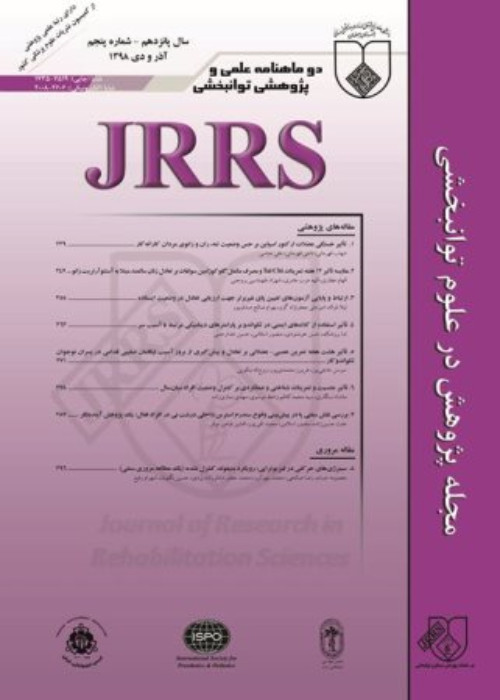Relationship between quality of life with ambulation status and lower limb range of motion in young adults with spastic cerebral palsy.
Consequences of cerebral palsy can cause significant influences on physical and psychological capabilities of adults with cerebral palsy and affect on their quality of life. The purpose of this study was to investigate the relationship between quality of life with hypertonia and ambulation status in young adults with spastic cerebral palsy.
In an analytical cross sectional study، 70 participants (40 women، 30 men، age range 20 to 40 years، mean age + SD، 26. 24 ± 5. 07) with spastic cerebral palsy were recruited in this study. They were selected from three Ra’ad Rehabilitation Goodwill Complexes in Tehran and Karaj cities. Quality of life (QOL)، ambulation status، knee extension، and ankle dorsi flexion range of motion were measured by World Health Organization Qualit of life questionnaire (WHOQOL- BREF)، functional ambulation category and manual goniometer، respectively. To analyze the data، Pearson and spearman correlation coefficient، Mann-Whitney U test، Independent sample T test were used.
We found no correlation between ambulation status and ankle dorsi flexion range of motion with quality of life domains. However، psychological and environmental domains showed low correlations with knee extension range of motion (respectively r = 0. 26 and r = 0. 28). Also، no significant difference was found between males and females in QOL domain scores.
Probably knee extension range of motion could affect on psychological and environmental domains in adults with spastic cerebral palsy. Also، impairments and physical limitations seems to have a less pronounced effect on health-related quality of life in adults with cerebral palsy.


